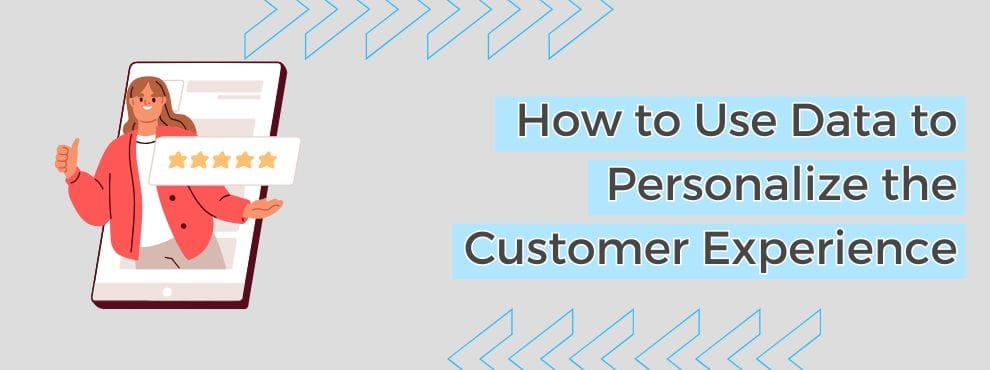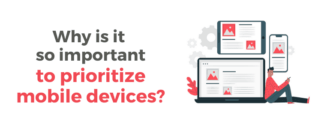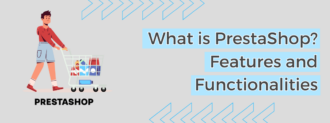Personalization has become one of the fundamental pillars of digital marketing. Today, brands seek to offer unique and tailored experiences to each user, which has been made possible thanks to advances in data collection and analysis. Data not only allows companies to better understand their customers, but also provides them with the necessary tools to design marketing strategies that generate greater loyalty and satisfaction. In this article, we will explore how to use data to effectively personalize the customer experience and how this process can be a key factor in the success of your business.
Table of contents
- 1 The importance of data in personalization
- 2 Data sources to personalize the customer experience
- 3 Customer segmentation for effective personalization
- 4 Automation and personalization: An integrated approach
- 5 The role of artificial intelligence in personalization
- 6 The use of personalization in multichannel channels
- 7 Ongoing measurement and analysis of personalization effectiveness
- 8 Conclusion
The importance of data in personalization
Access to large volumes of data has transformed the way companies interact with their customers. It is no longer enough to offer quality products or services; consumers now expect a personalized experience that is tailored to their needs, interests and behaviors. The use of data allows brands to anticipate users’ demands, providing them with what they are looking for before they even ask for it.
By understanding customer behavior through their interactions, preferences and buying patterns, companies can offer content, products or services that are more engaging and relevant to them. This strategy not only improves the customer experience, but also increases the likelihood of conversion and brand loyalty.
Data sources to personalize the customer experience
To effectively personalize the customer experience, it is essential to have access to a variety of data sources. This data can come from different customer touch points, allowing for a more complete view of their interests and needs. Some of the most valuable data sources for personalizing the customer experience include:
- Website behavioral data: The interactions users make on your website provide valuable information about their interests and needs. By tracking clicks, page views, time spent on each page, and actions taken (such as purchases or registrations), you can identify patterns that allow you to personalize offers and messages.
- Social media data: Social platforms provide a space for users to express their opinions, interests and activities. Analyzing this data allows you to identify trends, content preferences and the topics that most interest your audience, which helps you to generate content aligned with their expectations.
- Transactional data: Data derived from purchases made by customers provide direct information about their product preferences, purchase frequency and the average value of each transaction. This data allows predicting future behavior and offering complementary or personalized products based on previous purchases.
- Demographic data: Knowing the age, gender, location and other demographic aspects of users allows the creation of segmented strategies that offer relevant and appropriate content to the characteristics of each group.
Customer segmentation for effective personalization
One of the first and most important steps in personalizing the customer experience is segmentation. Dividing users into specific groups, based on their behaviors, preferences, demographics or previous interactions, allows you to provide them with more relevant content and offers.
The segmentation process involves classifying users according to different criteria, so that you can tailor communication and offers to each type of customer. For example, you might have one segment that responds well to luxury product promotions and another that prefers more affordable product offers.
Automation and personalization: An integrated approach
Automation is another essential component when it comes to personalizing the customer experience. Using marketing automation tools allows you to deliver messages and offers at the right time, without the need for manual intervention. Through the integration of data into automated systems, companies can personalize emails, website messages, ads and more, all in real time.
For example, if a customer abandons his or her shopping cart, the automated system can send a personalized reminder with a discount to encourage purchase. Or if a user visits a product page several times without buying it, they can be shown a targeted ad with related recommendations.
The role of artificial intelligence in personalization
Artificial intelligence (AI) has revolutionized the way brands personalize the customer experience. AI algorithms can analyze large amounts of data in real time to predict behaviors and preferences, allowing companies to deliver an even more personalized experience.
One clear example of how AI can help personalize the experience is through recommender systems. These algorithms suggest products based on the user’s past behaviors or what others with similar interests have purchased. Personalized recommendations increase the likelihood that the customer will find products relevant to them, improving the shopping experience and increasing sales.
The use of personalization in multichannel channels
Personalization should not be limited to a single channel. Consumers interact with brands across multiple touchpoints, such as websites, social networks, mobile apps and emails. To deliver a truly personalized experience, it is necessary to integrate data from all of these channels and ensure a consistent and continuous experience.
When a company uses data effectively across different channels, it can deliver an omnichannel experience that is tailored to customer preferences. This means users can receive personalized messages in their email, see relevant ads on their social networks, and enjoy a consistent shopping experience on the website, all without having to repeat information.
Ongoing measurement and analysis of personalization effectiveness
Personalization is an ongoing process that requires constant monitoring and adjustments. To ensure that your efforts are paying off, it is essential to measure the impact of personalized actions. This includes tracking metrics such as increased conversion rate, customer retention, customer lifetime value (CLV) and interaction with personalized messages.
Analyzing this data will allow you to identify which tactics are working and which need to be adjusted. Over time, you’ll be able to further optimize the customer experience, making it even more relevant and effective.
Conclusion
In an ever-evolving digital world, personalization is key to connecting with customers and delivering an exceptional shopping experience. Using data to understand user preferences and behaviors allows companies to design more effective, segmented and tailored marketing strategies for each customer.
From collecting data to analyzing and applying it through technologies such as automation and artificial intelligence, the possibilities for personalizing the customer experience are endless. By integrating these approaches into your marketing strategy, you will not only increase the likelihood of conversion, but also foster customer loyalty, creating stronger, longer-lasting relationships with your customers.
Related Posts










Deja un comentario